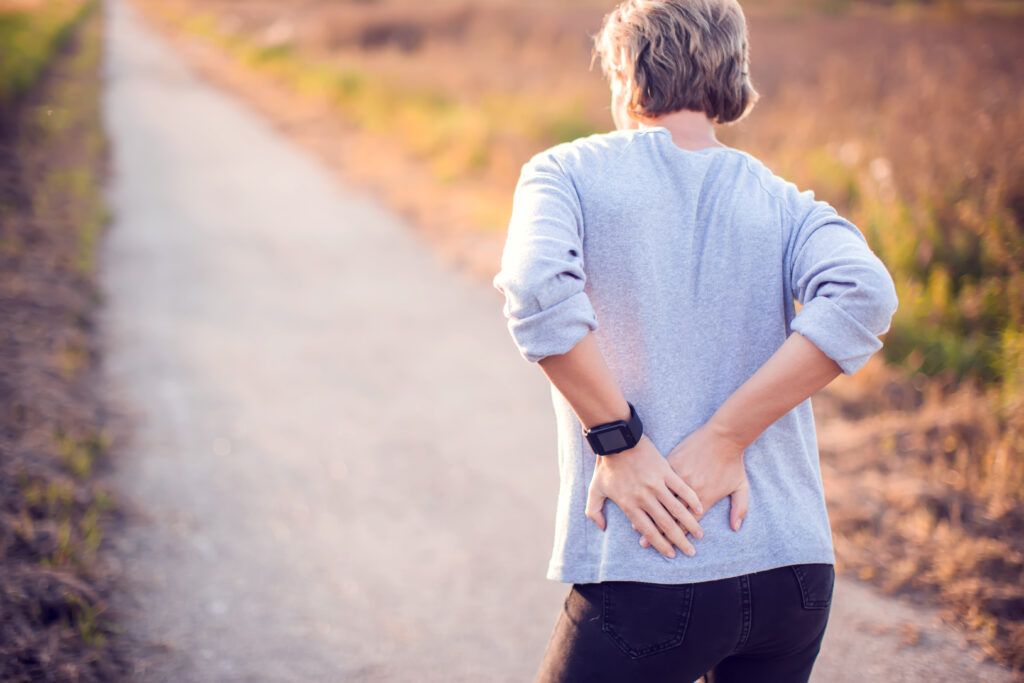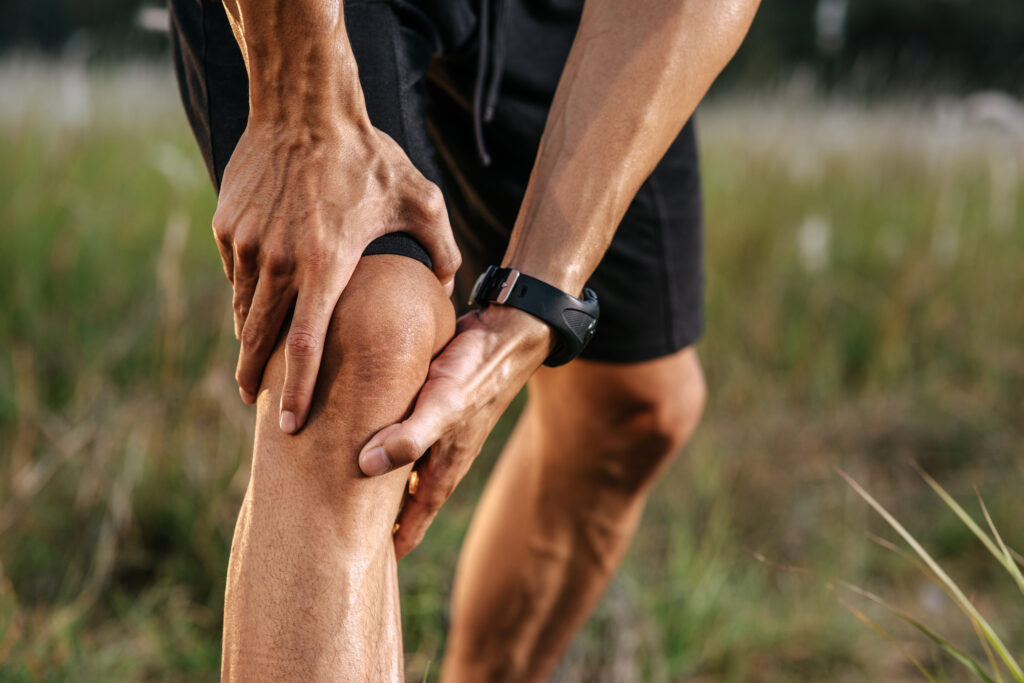When you're facing a sports injury in San Antonio, understanding the top recovery techniques can make all the difference. You might find that early intervention is essential, but that's just the beginning. Physical therapy, innovative treatments, and a focus on nutrition all play significant roles in your recovery process. Plus, don't overlook the benefits of massage therapy and mental health strategies. As you explore these options, you'll discover how each technique interconnects to create a thorough approach that supports your healing journey. What might surprise you is how community resources can further enhance your recovery.
Importance of Early Intervention
Early intervention is essential in sports injury recovery, as it can greatly influence your overall healing process. When you sustain an injury, acting promptly can considerably reduce the severity and duration of your condition. By seeking treatment right away, you can minimize inflammation, decrease pain, and prevent further damage to the affected area.
In those vital first 48 hours after an injury, your body's natural healing mechanisms are activated. This is when you should focus on applying the R.I.C.E. method—rest, ice, compression, and elevation. Resting the injured area prevents additional strain, while icing helps to reduce swelling and numb the pain. Compression supports the injury, and elevating the affected limb can further decrease swelling.
Ignoring or delaying treatment can lead to complications that prolong recovery time. You might find yourself dealing with chronic pain, decreased mobility, or even re-injury if you push through without proper care. Early intervention allows healthcare professionals to assess the injury accurately, providing you with a tailored recovery plan that suits your specific needs.
Moreover, addressing the injury early can help you regain confidence in your body. Knowing you're taking the right steps toward recovery can motivate you to stick to your rehabilitation plan.
Physical Therapy Approaches
Physical therapy plays an essential role in your recovery from sports injuries, offering targeted approaches to help restore strength, flexibility, and function. When you're recovering, a physical therapist will assess your specific needs and develop a personalized plan. This plan often includes hands-on techniques, exercises, and modalities to expedite healing.
One key approach is manual therapy, which involves manipulating soft tissues and joints to reduce pain and improve mobility. Your therapist may use techniques such as massage or joint mobilization to address tightness and enhance circulation, promoting quicker recovery.
Therapeutic exercises are another cornerstone of physical therapy. These exercises aim to build strength, improve range of motion, and restore balance. You'll likely start with gentle movements, gradually increasing intensity as your recovery progresses. Your therapist will guide you in performing these exercises correctly to prevent re-injury.
Additionally, modalities like ultrasound, electrical stimulation, or ice therapy can be used to manage pain and inflammation. These techniques can complement your exercise routine, speeding up the healing process.
Finally, education is a vital aspect of physical therapy. Your therapist will teach you about proper body mechanics and injury prevention strategies, empowering you to avoid future injuries.
Role of Nutrition in Recovery
Nutrition plays a significant role in your recovery from sports injuries, influencing both the healing process and your overall performance. What you eat directly affects your body's ability to repair itself after an injury. Consuming a balanced diet, rich in essential nutrients, can accelerate recovery and help you regain strength more quickly.
First, focus on protein intake. Protein provides the building blocks for muscle repair and growth. Aim for lean sources like chicken, fish, beans, and legumes. Incorporating these into your meals will support tissue regeneration after an injury.
Next, don't underestimate the importance of vitamins and minerals. Vitamin C, found in citrus fruits and leafy greens, is essential for collagen formation, which is important for tissue healing. Additionally, zinc, present in nuts and seeds, plays a key role in the immune response and can reduce inflammation.
Carbohydrates are equally important, as they provide the energy your body needs for healing. Opt for whole grains, fruits, and vegetables to fuel your recovery process effectively.
Staying hydrated is also significant; water helps transport nutrients and supports metabolic functions.
Lastly, consider consulting with a nutritionist who specializes in sports recovery. They can tailor a diet plan specific to your needs, ensuring you get the right nutrients in the right amounts.
Benefits of Massage Therapy
Massage therapy offers significant benefits for your recovery by enhancing circulation and helping to alleviate muscle tension.
When you incorporate massage into your routine, you can boost blood flow, which speeds up healing.
Plus, targeted techniques can effectively relieve tight muscles, allowing you to get back to your sport faster.
Enhanced Circulation and Recovery
When it comes to healing from sports injuries, enhanced circulation plays an essential role in recovery. Increasing blood flow to the affected areas helps deliver crucial nutrients and oxygen, which are vital for tissue repair. You mightn't realize it, but massage therapy can significantly boost circulation, speeding up your healing process.
During a massage, the therapist employs various techniques that stimulate the blood vessels. This stimulation encourages your body to send more blood to the injured areas, flushing out toxins and reducing inflammation. You'll likely notice improved mobility and reduced swelling as a result.
Moreover, enhanced circulation can help alleviate pain by reducing muscle stiffness and soreness. With better blood flow, your body can deliver the necessary components for healing, making it easier for you to get back on your feet.
Incorporating regular massage therapy sessions into your recovery routine can truly make a difference. Not only will you experience physical benefits, but the mental relaxation that comes with massage can also help you cope with the emotional challenges of injury recovery.
Muscle Tension Relief Techniques
A variety of muscle tension relief techniques can make a notable impact on your recovery from sports injuries. One of the most effective methods is massage therapy. By applying pressure to your muscles, a skilled therapist can alleviate tightness and promote relaxation. This not only eases your discomfort but also enhances blood flow, which is vital for healing.
You might also consider foam rolling as a self-massage technique. It helps release muscle knots and improve flexibility, making it an excellent addition to your recovery routine. Consistently rolling out your muscles can greatly reduce tension and soreness.
Stretching is another essential technique. Incorporating both static and dynamic stretches into your regimen can maintain and improve your muscle elasticity. This will help prevent injuries in the future.
Lastly, don't underestimate the power of heat and cold therapy. Applying a warm compress can relax tight muscles, while ice packs can reduce inflammation and numb pain.
Innovative Treatment Options
Many athletes are discovering innovative treatment options that can greatly enhance their recovery process. One such option is the use of regenerative medicine, which includes therapies like platelet-rich plasma (PRP) injections. These injections utilize your own blood components to accelerate healing in injured tissues, helping you get back to your sport faster.
Another exciting development is the integration of dry needling, a technique that targets trigger points in your muscles to alleviate pain and improve mobility. If you've been dealing with stubborn muscle tension, this method could provide the relief you need to get moving again.
You might also consider cryotherapy, where you expose your body to extremely cold temperatures for a short duration. This treatment reduces inflammation and speeds up recovery, making it a popular choice among elite athletes.
Alternatively, infrared therapy offers a different approach by using heat to promote circulation and cellular repair.
Don't overlook the benefits of electrical stimulation therapy either. Devices that deliver electrical impulses can help reduce pain and stimulate muscle contractions, which can be particularly effective during your rehabilitation phase.
Finally, you may want to explore the use of wearable technology. Smart devices can track your movement and performance, providing valuable data that can guide your recovery strategy.
Mindfulness and Mental Health
When you face a sports injury, mental resilience plays an essential role in your recovery.
Utilizing visualization techniques can help you stay focused on your goals, while effective stress management strategies can keep anxiety at bay.
Embracing mindfulness not only aids your physical healing but also strengthens your mental health during this challenging time.
Importance of Mental Resilience
Mental resilience plays a crucial role in sports injury recovery, and it can greatly impact your overall healing process. When you face the challenges of an injury, cultivating mental strength helps you navigate through pain and frustration. This resilience allows you to maintain a positive mindset, which can speed up your recovery.
Practicing mindfulness techniques can enhance your mental resilience. By staying present and focused, you can reduce anxiety and stress, both of which can hinder your healing. Incorporating mindfulness into your daily routine helps you process your emotions and develop a more balanced perspective on your recovery journey.
Furthermore, surrounding yourself with supportive individuals—coaches, teammates, and friends—can bolster your mental fortitude. Their encouragement can remind you that setbacks are a part of the process, not the end of your athletic journey.
Lastly, it's important to set achievable goals during your recovery. These milestones can provide you with a sense of accomplishment and motivate you to keep pushing forward.
Embracing mental resilience not only aids in physical healing but also strengthens your overall approach to sports and life.
Visualization Techniques for Recovery
Incorporating visualization techniques into your recovery routine can considerably enhance your healing process. By creating mental images of your body healing and performing at its best, you can stimulate physical and emotional recovery.
Start by finding a quiet space where you can relax without distractions. Close your eyes and take deep breaths, allowing your body to settle into a calm state.
Visualize your injury healing, focusing on the tissues repairing and strengthening. Imagine yourself moving freely and confidently, participating in your favorite sports activities. This positive imagery can help shift your mindset, reducing anxiety and promoting a sense of control over your recovery.
You can enhance this practice by incorporating affirmations. Repeat positive statements about your healing journey, reinforcing your belief in recovery. For instance, say, "I'm strong, and I'm healing every day."
Practice visualization daily, even for just a few minutes. Over time, you'll find that these techniques not only help you cope with the emotional challenges of injury but also promote a positive outlook that can accelerate your recovery.
Stress Management Strategies
Effective stress management strategies are essential for anyone recovering from a sports injury. When you're sidelined, the mental strain can be just as challenging as the physical pain. Incorporating mindfulness techniques into your routine can help you stay grounded and focused on recovery.
Start by practicing deep breathing exercises. Take a few moments each day to inhale deeply through your nose, hold for a few seconds, and exhale slowly through your mouth. This simple technique can reduce anxiety and promote relaxation.
Another powerful strategy is visualization. Picture yourself engaging in your sport, feeling strong and healthy. This mental imagery can boost your motivation and reinforce a positive mindset.
You might also consider journaling. Writing down your thoughts and feelings can provide clarity and help you process your emotions during this challenging time.
Lastly, don't underestimate the importance of social support. Connect with friends, family, or support groups who understand what you're going through. Sharing your experiences can alleviate stress and foster a sense of community.
Community Resources and Support
When recovering from a sports injury, tapping into community resources and support can make a significant difference in your journey.
San Antonio offers a variety of options that can help you stay motivated and connected during this challenging time. Surrounding yourself with the right support system can enhance your recovery and help you regain your confidence.
Consider reaching out to local organizations that focus on sports rehabilitation and wellness. They often provide valuable resources such as workshops, support groups, and even mentorship from experienced athletes who've faced similar challenges.
Here are a few key resources you can explore:
- Support Groups: Connecting with others who've experienced similar injuries allows you to share stories, tips, and encouragement.
- Rehab Centers: Professional facilities offer specialized programs tailored to your specific injury, guiding you through recovery.
- Community Sports Programs: Engaging in low-impact recreational activities helps you stay active, meet new friends, and keep your spirits high.
Conclusion
In San Antonio, prioritizing sports injury recovery means embracing a multifaceted approach. By combining early intervention techniques, physical therapy, proper nutrition, and innovative treatments, you can enhance your healing process. Don't underestimate the power of massage therapy and mental resilience in your journey. Engage with community resources for additional support, and you'll be well on your way to a faster, more effective recovery. Remember, your commitment to these strategies can make all the difference in your athletic performance.



